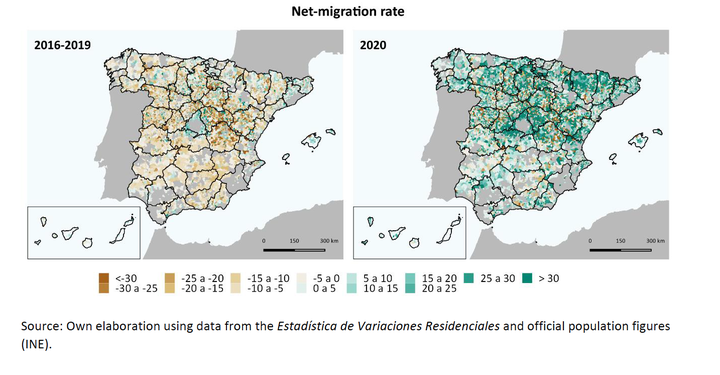Rural revival? The rise in internal migration to rural areas during the COVID-19 pandemic. Who moved and where?

Abstract
During the outbreak of the COVID-19 pandemic, anecdotal evidence of a “rural revival” emerged mirroring the “urban exodus” hypothesis. Currently, we know that internal migration to rural areas increased in some countries during 2020, although not with the intensity speculated by the media. However, little is known about the attributes of rural areas attracting migrants and demographic composition of migration inflows. Drawing on administrative population register data, we analysed the main types of rural areas pulling internal migrants in Spain and their demographic characteristics, namely age, sex and place of birth. Our results show that in-migration increased in rural areas close to cities and with high prevalence of second homes. Inflows to rural areas comprised migrants across a wide age spectrum, from young adults and families to retired individuals. These flows also comprised foreign-born populations from high socio-economic background, particularly Latin Americans and individuals from high-income countries. Our findings suggest unequal impacts of the COVID-19 pandemic on the conterurbanisation process, triggering population movements among high-socioeconomic groups from cities to rural areas.